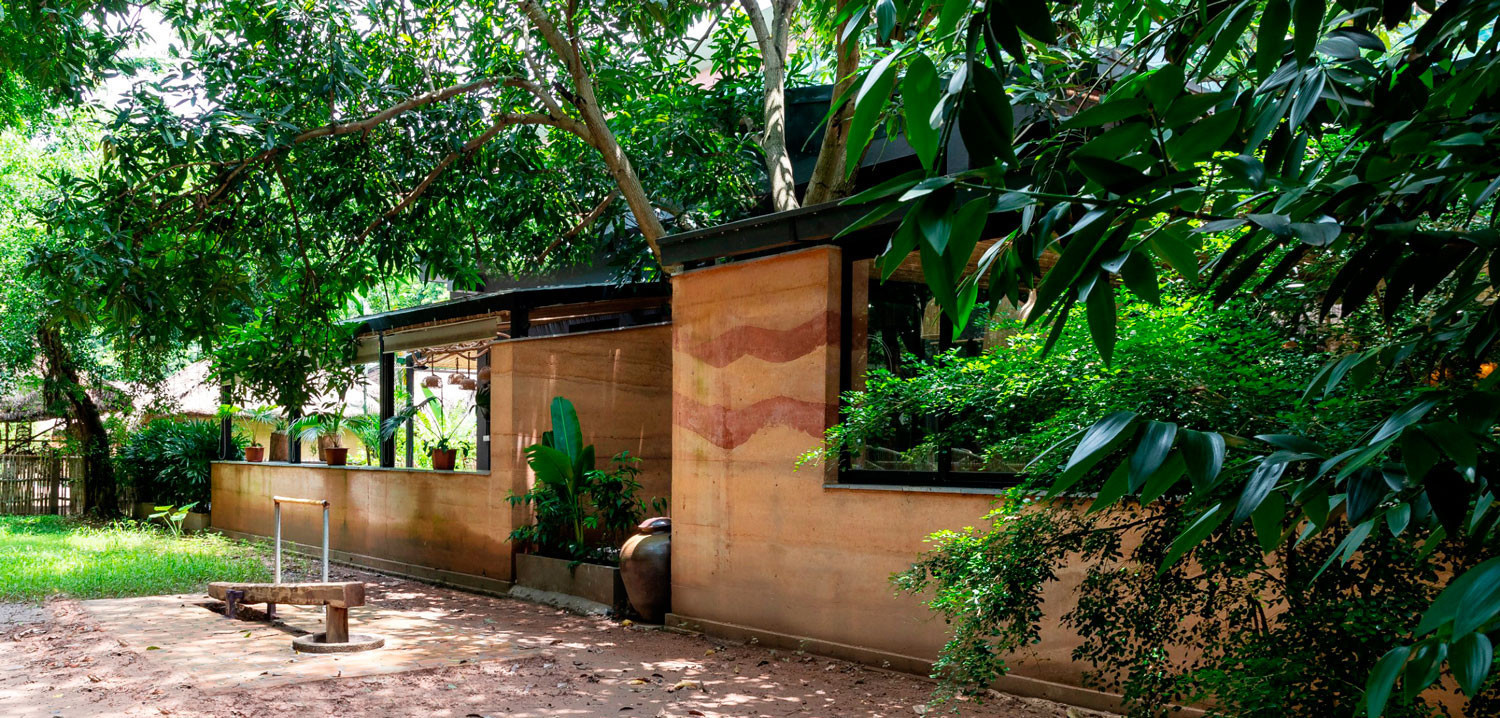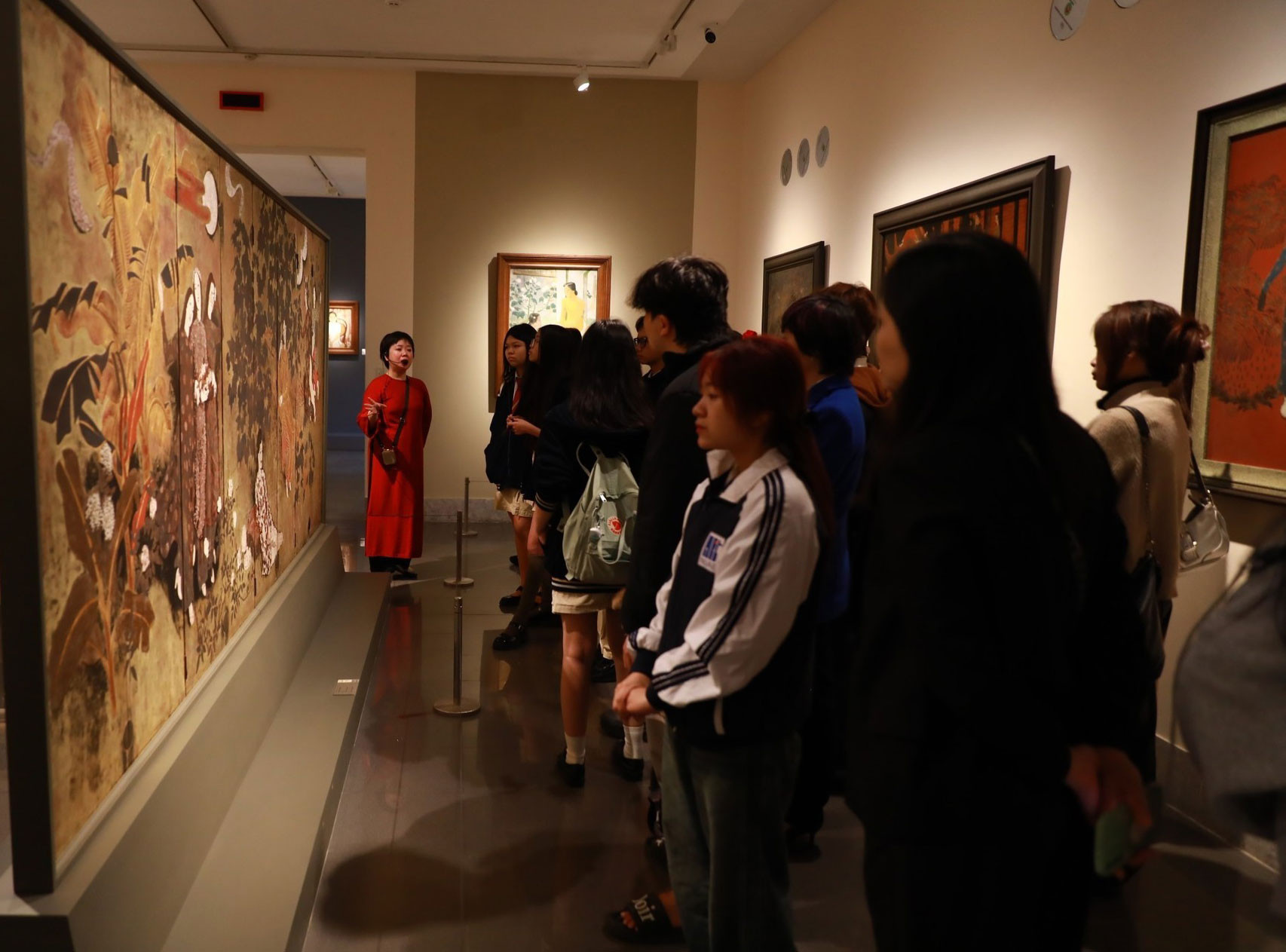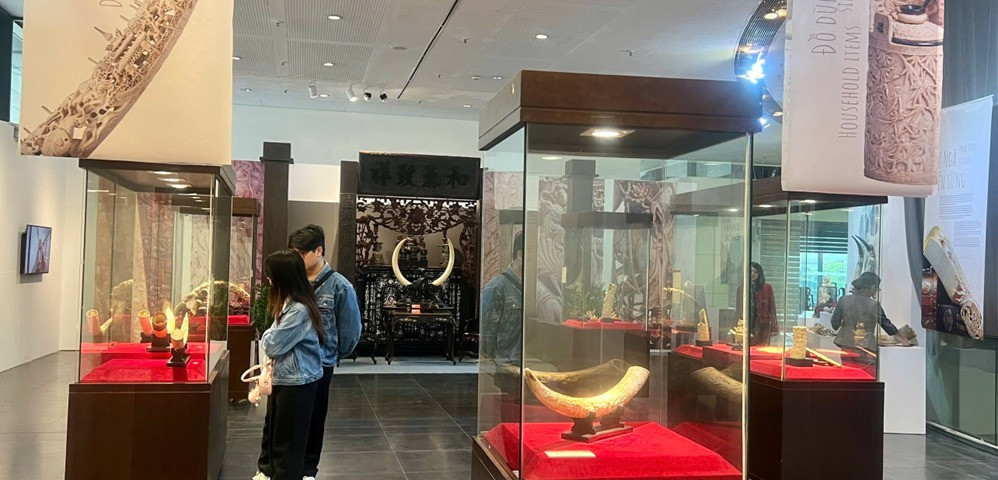By transforming how exhibitions are presented, enhancing visitor interactivity, and using creative media strategies, several Vietnamese museums are redefining how they attract and retain audiences.
Among the more than 160 museums across Vietnam, only a handful consistently draw large visitor numbers. That is now changing.
The Vietnam Military History Museum, built in Nam Tu Liem District (Hanoi), officially opened in November 2024. Spanning over 386,600 square meters and costing approximately 2,500 billion VND (around $100 million USD), the museum features a modern, multifunctional design. More than a place to view war artifacts, it offers immersive experiences to help visitors understand Vietnam’s military history and the fight for independence.

Since its opening, the museum has seen weekend visitor numbers exceed 10,000. At times, both interior and exterior areas have been overwhelmed. Even the access roads along Thang Long Boulevard experienced severe congestion due to the influx of tourists.
As of this writing, even on weekdays, the museum remains crowded - despite having offered free entry for over four months.
Another example is the War Remnants Museum in Ho Chi Minh City - ranked the second most popular museum in Asia (2016) and among the world’s top 10 (2018) by TripAdvisor - which is also experiencing record-breaking activity.

Lam Ngo Hoang Anh, Deputy Director of the museum, told VietNamNet that the site received over 1.3 million visitors in 2024 - up 26.72% year-on-year. Remarkably, that’s even 2.98% higher than the 2019 peak before the COVID-19 pandemic.
According to the Ho Chi Minh City Department of Tourism, international arrivals to the city reached over 6 million in 2024. Of the 1.3 million museum visitors, 80% were foreigners. “This means that roughly one out of every six international tourists in Ho Chi Minh City visits our museum,” Hoang Anh noted.
In the first quarter of 2025 alone, the museum welcomed 336,000 guests, marking a 16.45% increase over the same period in 2024. The museum believes this growth reflects the continued interest - especially from young people - in Vietnam’s wartime history and national resilience.
Many foreign war veterans have been moved to tears while visiting, overwhelmed by memories of suffering and loss.
"This increase in visitors plays a vital role in educating the younger generation about patriotism and national pride. We want them to understand the immense sacrifices made to achieve the peace they enjoy today,” Hoang Anh emphasized.
Meanwhile, the Vietnam Museum of Ethnology continues to rank among the busiest, attracting an average of 33,000 visitors per month in 2023 and 460,000 throughout 2024. On some days, it has drawn over 11,000 guests.
Beyond traditional displays, the museum also hosts events related to Vietnamese ethnic cultures. These engaging programs are drawing more families and young people. Recently, the museum introduced an interactive Korean cultural zone where Gen Z visitors can try on traditional attire - an initiative that's proven especially appealing.

A standout feature is the Truc Lam space, which in August 2024 won two international architecture awards: an Honorable Mention from the International Architecture Awards (IAA) 2024 and the prestigious Green Good Design award for eco-conscious design.
Previously, many Vietnamese museums lacked cohesive, immersive visitor journeys. With the introduction of Truc Lam, the Ethnology Museum is pioneering a new trend: green architectural spaces that harmonize design and content.
The Vietnam Fine Arts Museum has also embraced digital transformation, introducing tools such as the iMuseum VFA multimedia guide app, 3D virtual tours, and online exhibitions through VAES, all of which have greatly enhanced visitor experience and art preservation.

According to Dr. Nguyen Anh Minh, Director of the museum, visitor numbers have increased 200-300% in recent years.
“In addition to traditional channels, social media - Facebook, TikTok, Instagram - and influencer videos have significantly boosted the museum’s visibility,” Minh said.
While the Vietnam Fine Arts Museum still welcomes a modest 150,000 guests annually compared to major global institutions, 70% are Vietnamese, and 70% of those are young people - a promising trend.
Once labeled dormant, the Hanoi Museum is now actively rejuvenating its space through themed events and workshops. In 2024, over 20,000 people participated in cultural experiences like Mid-Autumn festivals, traditional craft demonstrations (to he figurines, Me Tri green rice, Bat Trang pottery), and historical exhibitions.

The museum is also adopting international-standard graphics and thematic designs that align with national history and heritage to attract both domestic and foreign youth audiences.
Experts emphasize that for museums to truly captivate young people, they must be sensitive to the issues that matter to this generation. This means not only reimagining fixed exhibits but also organizing thematic programs with dynamic, frequently refreshed content that encourages repeat visits.
Tinh Le - Gia Bao